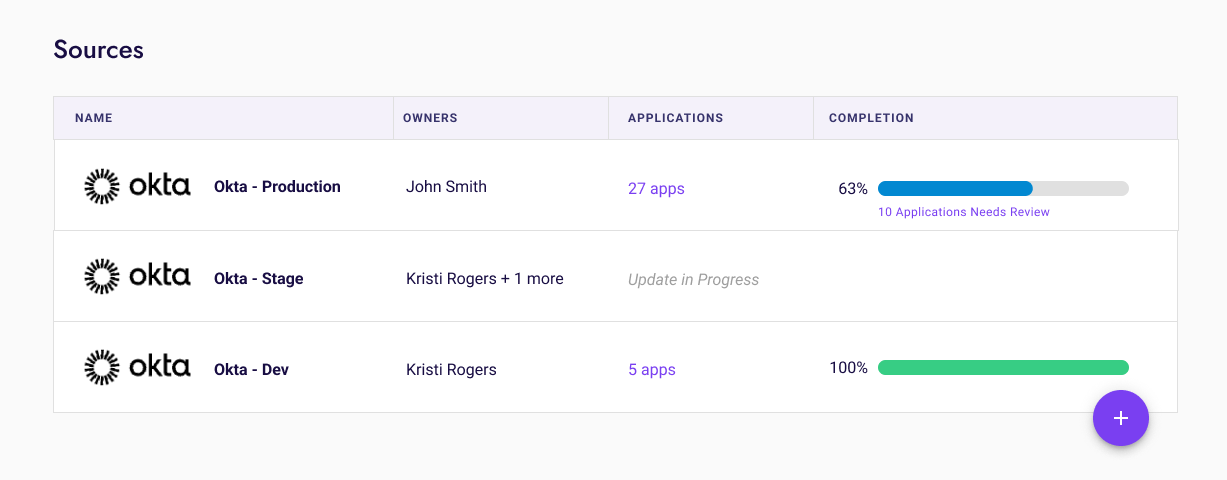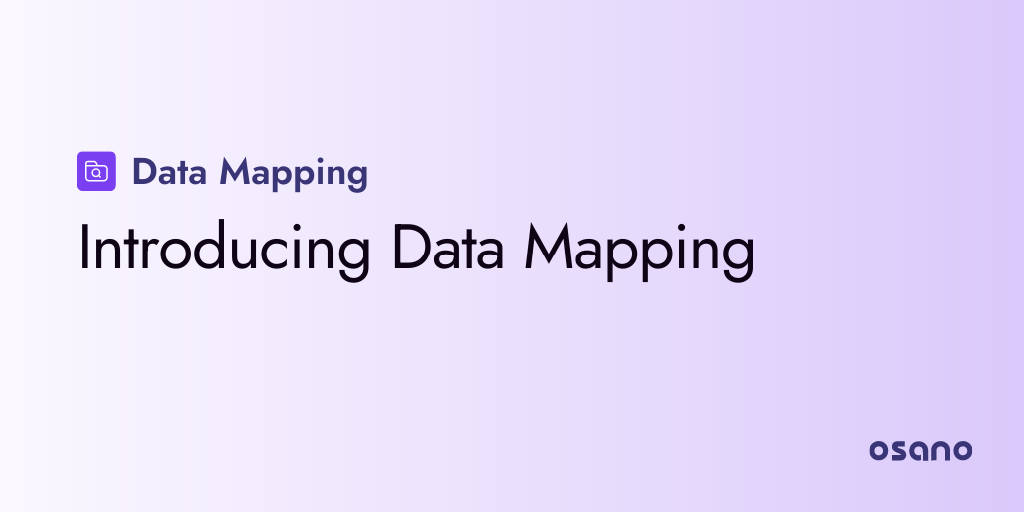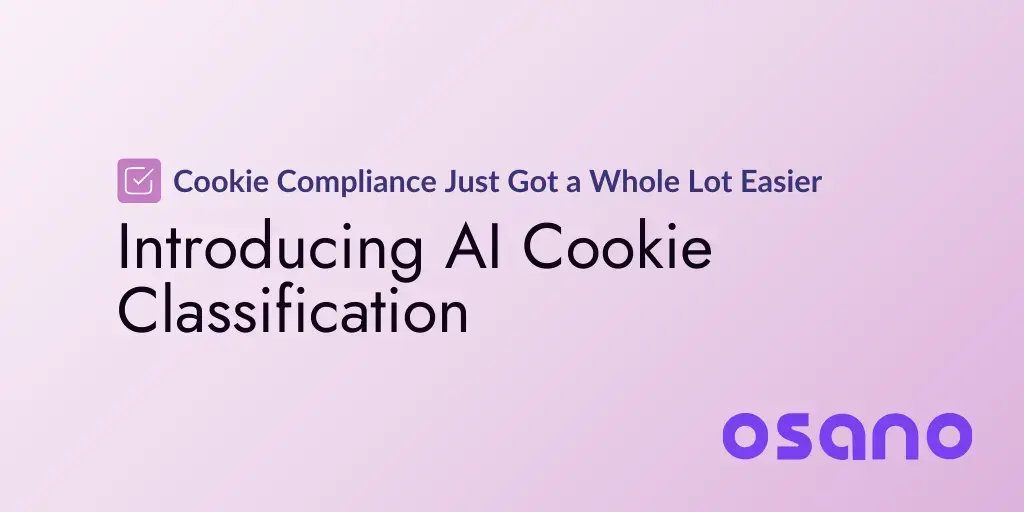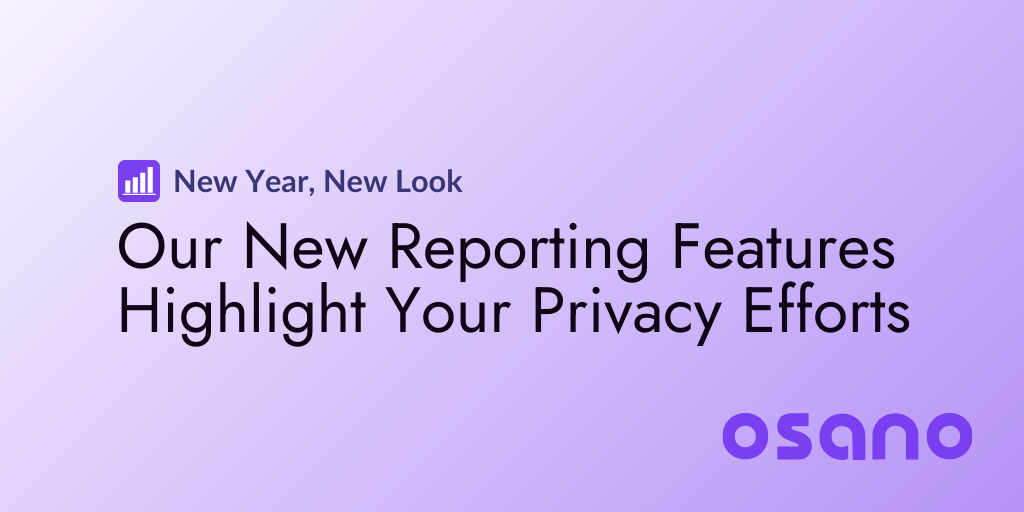“What PI does my organization process, and where is it stored?”
“How do I reduce data sprawl and support data minimization?”
“How can I find the data I need to complete a data subject access request (DSAR) or record of processing activities (RoPA)?”
Achieving data privacy compliance requires answering dozens of hard questions like these. While each can be answered in a one-off, manual fashion, privacy professionals will be significantly more effective if they have a foundational, automated resource they can consult each time they need to answer compliance questions like these.
That resource is a data map.
Data maps serve as an inventory of the personal information (PI) an organization collects and uses along with any and all information needed to manage that PI. Now, Osano customers can generate their own organizational data map with our new product: Osano Data Mapping.
Caught Between a Rock and a Hard Place
Privacy professionals understand that knowing where, how, and why their organization processes PI is essential to compliance. In some organizations, they create their data map using non-visual, manual spreadsheets and tables—managing this forest of spreadsheets, however, can be the equivalent of a full-time job.
Other privacy professionals are luckier; their organization has dedicated data analysts they can turn to. But often, these experts are in high demand and can’t afford to give data privacy compliance priority over their many other initiatives. Even when they can, they don’t always have the same expertise and privacy consciousness that a data privacy professional does.
A Dedicated, Privacy-Focused Data Mapping Solution
Osano Data Mapping saves privacy professionals from both excess manual labor and dependence on in-demand, general-purpose data engineers. As a data mapping solution designed by privacy professionals for privacy professionals, Osano Data Mapping enables you to quickly construct a data map that provides insight and audibility and sets the stage for downstream compliance activities.
Automated Discovery and Classification
Osano Data Mapping enables you to automatically discover and classify systems containing PI across your organization’s systems by integrating once to your Single Sign-On (SSO) provider. Osano can discover any system and application connected to your SSO, and our library of pre-built integrations allows Osano to discover and classify personal data within those applications and systems. Furthermore, it’s straightforward to integrate proprietary or niche systems with Osano’s RESTful API, so you can obtain the same level of automation. This data can then be easily surfaced for use in DSARs, RoPAs, or other compliance deliverables.

Risk- and Effort-Based Prioritization
To create your initial data map and keep up with additions and changes, it can be difficult to prioritize your work. Osano Data Mapping enables you to focus your resources on data stores with the most or riskiest data, access, or use and allows you to flag systems that do not contain PI so you can eliminate wasted effort. Osano Data Mapping analyzes and scores systems based on a variety of criteria, such as their likelihood of storing PI, the vendors they export data to, and other factors.

Data Visualization
A graphical, interactive map allows you to visualize the relationships between data stores, as well as to drill down for greater detail or to zoom out to see the big picture. This enables you to visually identify risk and incomplete data store definitions, understand how data flows through your systems, and gain insight into your overall PI landscape.
How to Get Started With Osano Data Mapping
To gain access to Osano Data Mapping, just schedule a meeting with us by filling out this form. An Osano expert will reach out to book a meeting, discuss your needs, and how Osano Data Mapping can help your organization.
.webp?width=1220&height=1090&name=Osano-guarantee-seal%20(1).webp)



